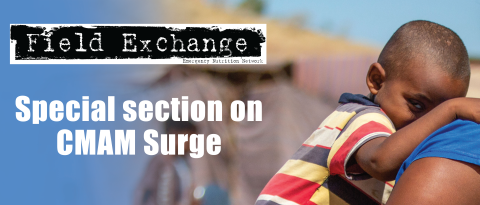Food systems for children and adolescents
Research snapshot1
Well-nourished children and adolescents are the foundation of thriving communities and nations. Undernutrition, in the form of stunting, wasting and micronutrient deficiencies, remains widespread among young children while overweight, obesity and diet-related non-communicable diseases are increasing rapidly among children and adolescents including in countries and regions where undernutrition is still prevalent. Recognising that food systems are essential to supporting diet quality among children and adolescents but that their nutritional needs are rarely prioritised in efforts to reorient food systems, UNICEF and the Global Alliance for Improved Nutrition (GAIN) convened a ‘Global consultation on food systems for children and adolescents’ in November 2018 to identify priority actions for food systems and diet quality among children and adolescents. A special issue of ‘Global Food Security’ contains a series of 10 papers that were commissioned based on the priorities identified before and during the consultation.
Three papers describe the distinctive way that children and adolescents engage with the food system and how this influences their diets (Fox & Timmer, 2020), nutrition recommendations for the dietary intakes of children and adolescents (Hollis et al., 2020) and what data is available on diet quality in low- and middle-income settings (Kupka et al., 2020). These three papers indicate that children and adolescents require special attention in food system reorientations for improved diets and that, despite existing data gaps, there is evidence that children’s and adolescents’ dietary intakes are sub-optimal compared to dietary recommendations. A further paper builds on this evidence to create a conceptual framework of food systems for the diets of children and adolescents – the ‘Innocenti Framework’ – that depicts drivers, determinants, influencers and interactions (Raza et al., 2020) and another paper details specific actions to reorient food systems for improved diets in this age group (Hawkes et al., 2020). These tools address important conceptual and practice gaps and create common analytical reference points for different stakeholders working on food systems and nutrition.
Reviews of evidence are included regarding how to improve food supply chains (Nordhagen, 2020), food environments (Downs & Demmler, 2020) and food behaviours (Tumilowicz & Pelto, 2020) – the key determinants of food systems outlined in the Innocenti Framework. Recognising the changing landscape of malnutrition, a review of evidence is included regarding the marketing of unhealthy, ultra-processed foods to children and adolescents, especially on digital platforms (Tatlow-Golden & Garde, 2020). A concluding paper presents the key implications for public policies and programmes with specific country-level illustrations (Morris et al., 2020). This special issue will be useful for food system reorientations in support of improved diet quality among children and adolescents, as protecting the diets of children and adolescents has never been more urgent and relevant than now.
Subscribe freely to receive Field Exchange content to your mailbox or front door.
Endnotes
1 Edited by Roland Kupka, Saul Morris, Elizabeth Fox. (2020). Food Systems for Children and Adolescents. Global Food Security, Volume 27, December 2020 https://www.sciencedirect.com/journal/global-food-security/vol/27/suppl/C
References
Downs, S., & Demmler, K. M. (2020). Food environment interventions targeting children and adolescents: A scoping review. Global Food Security, 27, 100403. doi:https://doi.org/10.1016/j.gfs.2020.100403
Fox, E. L., & Timmer, A. (2020). Children's and adolescents' characteristics and interactions with the food system. Global Food Security, 27, 100419. doi:https://doi.org/10.1016/j.gfs.2020.100419
Hawkes, C., Fox, E., Downs, S. M., Fanzo, J., & Neve, K. (2020). Child-centered food systems: Reorienting food systems towards healthy diets for children. Global Food Security, 27, 100414. doi:https://doi.org/10.1016/j.gfs.2020.100414
Hollis, J. L., Collins, C. E., DeClerck, F., Chai, L. K., McColl, K., & Demaio, A. R. (2020). Defining healthy and sustainable diets for infants, children and adolescents. Global Food Security, 27, 100401. doi:https://doi.org/10.1016/j.gfs.2020.100401
Kupka, R., Siekmans, K., & Beal, T. (2020). The diets of children: Overview of available data for children and adolescents. Global Food Security, 27, 100442. doi:https://doi.org/10.1016/j.gfs.2020.100442
Morris, S. S., Barquera, S., Sutrisna, A., Izwardy, D., & Kupka, R. (2020). Perspective: Interventions to improve the diets of children and adolescents. Global Food Security, 27, 100379. doi:https://doi.org/10.1016/j.gfs.2020.100379
Nordhagen, S. (2020). Food supply chains and child and adolescent diets: A review. Global Food Security, 27, 100443. doi:https://doi.org/10.1016/j.gfs.2020.100443
Raza, A., Fox, E. L., Morris, S. S., Kupka, R., Timmer, A., Dalmiya, N., & Fanzo, J. (2020). Conceptual framework of food systems for children and adolescents. Global Food Security, 27, 100436. doi:https://doi.org/10.1016/j.gfs.2020.100436
Tatlow-Golden, M., & Garde, A. (2020). Digital food marketing to children: Exploitation, surveillance and rights violations. Global Food Security, 27, 100423. doi:https://doi.org/10.1016/j.gfs.2020.100423
Tumilowicz, A., & Pelto, G. H. (2020). Interventions to improve dietary intake behaviors among children and adolescents. Global Food Security, 27, 100413. doi:https://doi.org/10.1016/j.gfs.2020.100413


